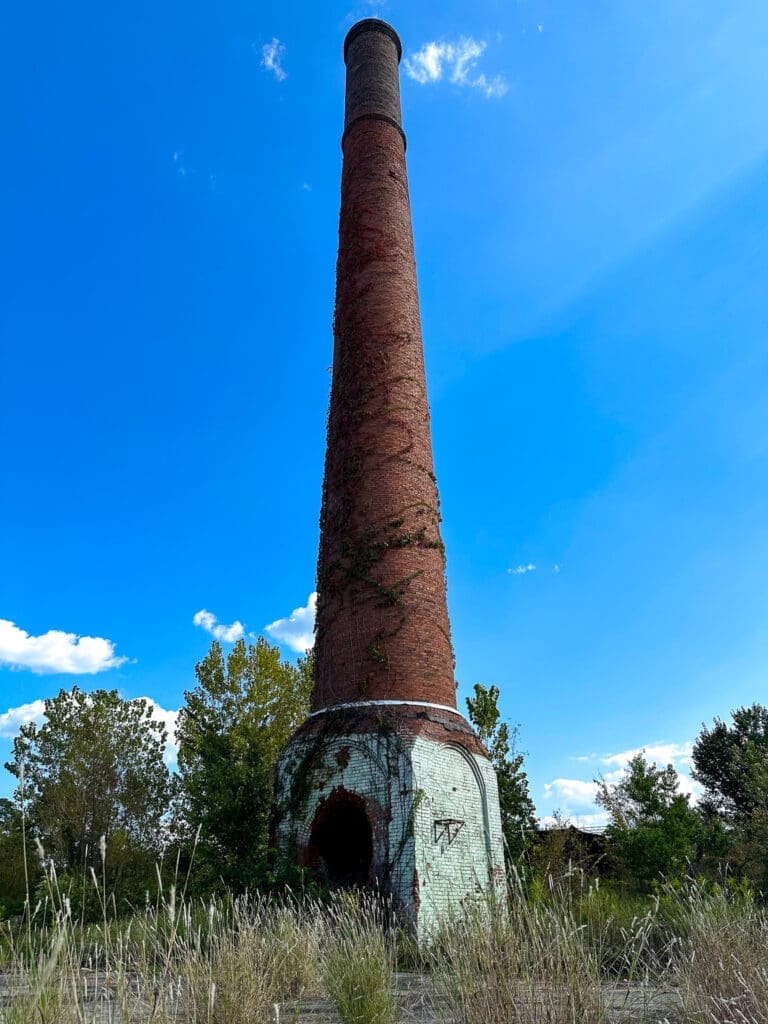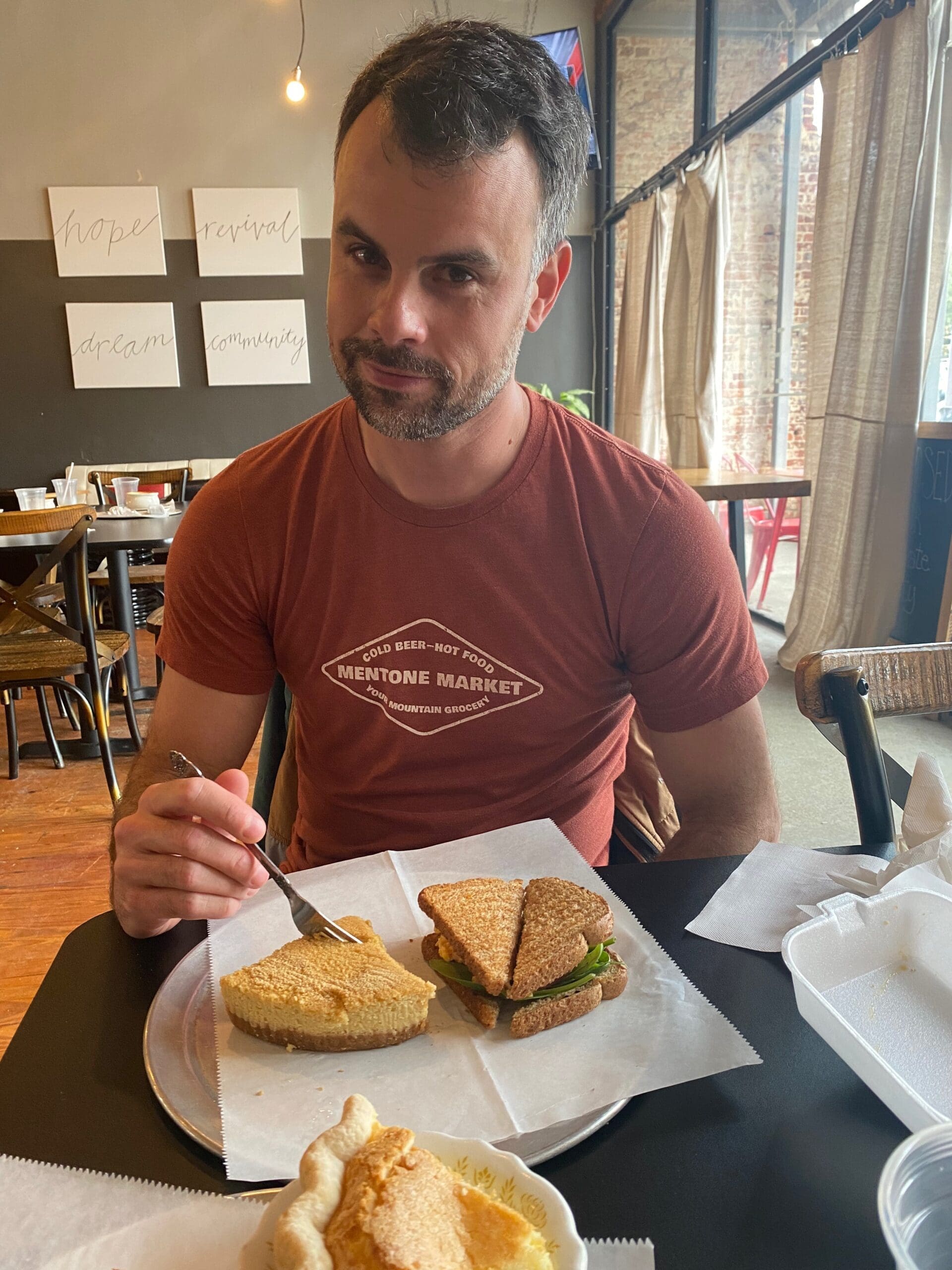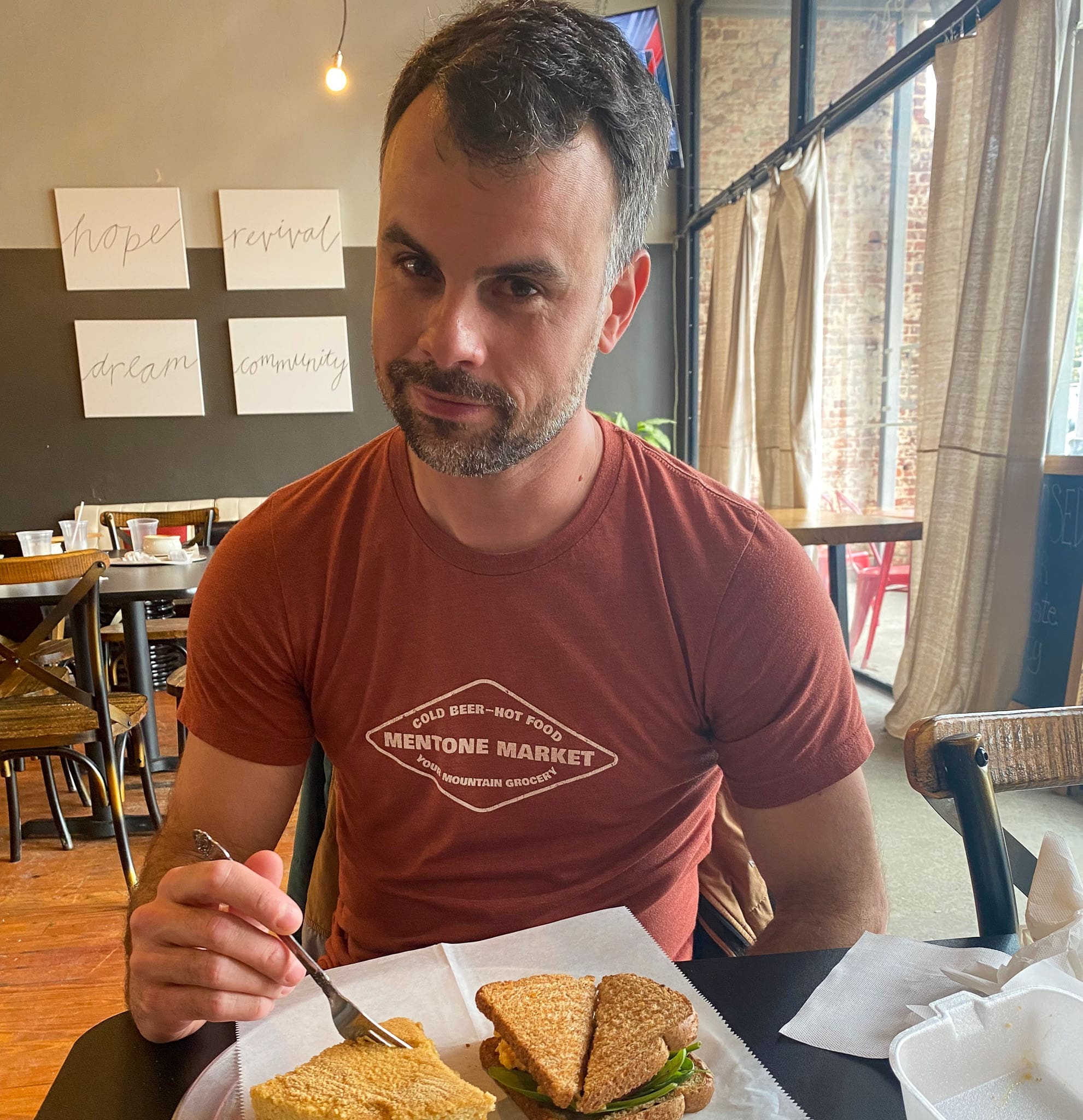This article represents the opinions of its author. The views expressed here are not necessarily representative of The Sunrise News staff as a whole.
Ramble #5: Sylacauga, part one
Photos by Wesley Miller and Harrison Neville
Read part 2 here.
It’s no secret, at least to those of us that live here, that Alabama has mountains.
From Lookout Mountain to Cheaha to Monte Sano, the northeast quadrant of our state is covered with them. But in our mental topography of Alabama, I suspect that most of us assume that the mountains meet their southern end in Birmingham. Or at least that’s what I assumed.
I was wrong.
There’s another mountain, the final Appalachian peak over 1,000 feet, somehow hidden a full hour southeast of the city: Flagg Mountain in Sylacauga, and it’s beautiful.
Curious to learn more, I headed down for a few days of exploration. And after having spent time in Sylacauga, I have come to view Flagg as something of a symbol for the city: beautiful, storied and yet somehow still a bit of a secret.
Sylacauga has, to name a few: gorgeous scenery, celebrity citizens, geological intrigue, world-class art, delicious food and — perhaps my favorite — the downright weird. Forgive me if that all sounds a bit like a brochure, but it’s true. Sylacauga is packed.
So head with me to this small, central Alabama town where we’ll meet the locals, take in the sights and see what kind of trouble we can get into.
But wait! Before you go into town…

When arriving in Sylacauga, I recommend stopping at Gantt’s Quarry Observation Point. There is no better place to begin exploring and understanding the city.
And while those views are nice and the quarry is sizable, it is, in the most literal sense, only scratching the surface. We’re looking at merely the uppermost reaches of the Sylacauga marble vein, a 500-million-year-old behemoth stretching 30 miles long, 1.5 miles wide and 400 feet deep.
Lest we mistake its significance, this sleeping, primordial leviathan has only one peer in the world: the marble in Carrara, Italy. So if you want the highest quality marble on the planet, of the purest color and sturdiest structure, then you travel to a town in Italy, or you come to Sylacauga, Alabama.
It is no coincidence that many of our country’s most famous structures — such as the Lincoln Memorial, the Supreme Court, the New York Stock Exchange and many others — are built from Sylacauga marble.
Woah. What is that thing?

As you enter town, you may notice this enormous smoke stack rising over the north end, calmly regarding you with its august, 20th-century industrial gaze.
This brick monolith is all that remains of Avondale Mills, once the center of a booming Sylacauga textile industry. Constructed in 1913, it was the first of three mills built in town. At one point, 20% of the state’s cotton passed through this company’s factories.
Global economics and trade have long since silenced this part of Sylacauga’s economy, and this plant was decommissioned in 2006 and burned in 2011. Still, its visage is an appropriate economic symbol for the city: the influence of the factories still looms large in town, and the area will soon be reimagined as a modern workforce training hub.
Incidentally, this “Avondale” is the same namesake as the neighborhood in Birmingham, proclaimed by Buzzfeed to be the most hip place in Alabama.
Downtown

Okay, okay, enough about history for now. Look, I’m a dad approaching middle age, so it’s inescapable, but I’ll try to contain myself.
Instead, it’s high time we head to town where the Chamber of Commerce has mistaken our fearless hero for an actual adult and invited him — er, me — to a ribbon cutting for a new business, Cuppa Grace Coffee Shop. Grateful for the coffee, we did our best to behave as if we had matured beyond middle school.
And while I joke, because that’s just what I do, it was an honor to be there. One of the key things that this whole Alabama-writer-journeyman thing has taught me is that to walk into a small business is to step into a sacred place.
If that sounds like hyperbole, I ask that you stroll with me, if you will, a couple blocks down the street.

Since we’re in a hiking town, and I like to pretend like I know what I’m doing while on the trail, let’s make a stop at the local outfitters, Trailwares.
And given that whole middle-aged-dad thing, I fear that I am also no longer able to refrain from making extended conversation with strangers.
Which brings us to…

After 31 years of working at Walmart, Nancy, pictured on the left, decided that she was ready to make a change.
Despite fielding questions over whether Sylacauga could support an outdoor clothing and gear store, she had been mulling it over for a decade and figured she wasn’t getting any younger. So, in 2017, she took a deep breath, quit her job and opened Trailwares.
In the beginning, almost no companies would work with her. As she says, she was basically a T-shirt shop. Still, she managed to keep the doors open, and gradually respected brands like Patagonia and The North Face let her open an account.
Her father never got to see the store, but before her mother passed from Covid-19 in 2021, Nancy FaceTimed her during the shutdowns in March of 2020, and her mother watched as Nancy dropped the final check in the mail to pay off her business loan.
Sometimes, she says, “I walk out of the store and just cry. Not even anything sad. It all just feels that good.”
When we asked to take a photo, she insisted that we include all of her employees and name them, even the ones who weren’t there that day. As she says, “I couldn’t do it by myself.”
Featured above: Nancy Willis, Jamie Edwards, Hannah Blackerby, David Dickie. Not in the photo: Carmen Lovett, Janice Stone.
Like I said, sacred.
About that Marble…

A few blocks south from downtown, walk over to Norton Ave. — or, if you’re lazy like us, then drive — and you’ll come across a lot with nothing on it but this large, nondescript rectangular fence.
Given the whole “best marble on the planet” situation, Sylacauga has a Sculptor in Residence, Craigger Browne. He works out of his studio here, “The Cage”; hosts world-class sculptors at the city’s annual Magic of Marble Festival; and acts as an ambassador for the city.
On most weekdays, you’ll find him here working away.

Craigger eagerly volunteered to be our tour guide for the day. As he said, “This city has been so wonderful to me. I will do anything I can for Sylacauga.”

Notice that I included the street name where Craigger works? He says that anyone is welcome to stop for a visit.
In what was surely a momentary lapse in judgment, he even let your manchild author give marble sculpting a go.
I submit that this is one of the things that makes Alabama so special: an internationally respected, master artist invites the public to come hang out whenever they want. Try getting that treatment in New York City or Los Angeles or, well, most places.
And while Craigger’s technique is surely not as refined as mine, check out the video above for a glimpse of the tremendous work that goes into sculpting raw marble. Patience, it seems, is key.
For context, after about 160 hours of this, Craigger can turn that hunk of metamorphic rock into something like this…

Medusa, or as Craigger calls her, “the patron saint of stone sculptors.”
“We’re all jealous of her power!” he said, “she can just look at things and turn them into marble. The goal is to make every sculpture look that way: as if it was just turned to stone.”
So he leaves her in The Cage, unfinished: “if I finished her, then I guess I’d have to sell her. I’d rather have her with me for inspiration.”
And while 160 hours sure sounds like a long time, give a truly expert sculptor a bit more time, and he or she might be able to craft something like…

Sylacauga Emerging, the sculpture featured at the beginning of the article. It rests in front of city hall and took Craigger a whole 15 months to complete. Yes, months. 15 of them.
“Marble is in everything,” he said, “diapers, sheet rock, shoes. Open a gum wrapper: that powder is marble. What are your bones made of? Calcium, the same as marble. We use it in toothpaste, in medicine such as Tums, to enrich our foods — you name it. Marble isn’t just under the city; it’s special here because it’s also literally who we are.”
But lest we get too serious, Craigger said that when he neared the end of the sculpture, each morning he found a mockingbird resting on the statue’s head. “That’s when I knew it was a true sculpture,” he said, “The birds were using the bathroom on it.”

Craigger also created a series of sculptures across the street, in front of what may well be his favorite place in town, the city library.
And this, I think, was what impressed me most about Craigger. World-renowned sculptor? Sure. Chance to share and discuss his life’s work? Happily. But want to know what really gets Craigger going? The summer reading program at the library.
I’m not kidding. At some point, every conversation returned to it: “You have got to hear about our summer reading program!” or “The librarians are incredible!” or “Hundreds of kids, streaming in!”
And everywhere we went, every time we saw a child, Craigger stopped and said hello.
Oh, and remember that poop-happy bird from earlier? After the city did the unveiling in 2014, the crowd departed, and Craigger was heading home when he noticed, across the street, the mockingbird perched atop Sylacauga Emerging’s head. The bird then swooped down, flew across the street, landed on one of the sculptures here, and promptly vacated its bowels.
The Hidden wonders of the Sylacauga Library

It just so happens that this unassuming, small-town library is home to two top-notch — and completely free — art galleries.
The first is dedicated to, as you probably guessed, marble sculpting.

You may notice that the sculpture above is, well, pretty impressive.
Given the quality of the marble in Sylacauga, many of the world’s foremost marble sculptors have come to town for the marble festival. That’s right; the best artists in the world convene once a year here in Sylacauga, Alabama.
That’s not hyperbole. One of the artists here, Marco Augusto Dueñas, has three pieces in the Vatican.
Peruse the photos below for a sample.









Free art gallery #2? A series by Douglass Crockwell, commissioned by Avondale Mills, the former titans of industry whose old smoke stack we visited earlier.
These ran as full-page magazine ads, intended to show the halcyon way of life in the local factory community.
Never heard of Douglass Crockwell? Actually, you might have — or, at least, you’ve probably seen his work.

If you look closely, then you could be forgiven for thinking that the paintings look like Norman Rockwell’s. And really, “Douglass Crockwell”? They even seem to have the same name…
*scrolling Google*
Let’s see, both men created cover art for The Saturday Evening Post, where Rockwell did his most famous work.
*scrolling*
They both used the same realistic style…
*scrolling*
They both painted the same stuff…
*scrolling*
So, basically, their art was indistinguishable? And sometimes, when I think I’m looking at Rockwell art…I’m actually looking at Crockwell art?
Listen. I don’t know about you, but this is starting to smell like a conspiracy. How can there be another Norman Rockwell whose name was literally “Crock?”
Remember when everyone lost their minds over the whole Berenstain Bears thing? How about when Wyoming didn’t exist?
The internet is not ready for this Rockwell/Crockwell business.
And neither am I. Whatever the explanation, surely a parallel universe and the Illuminati are involved.
For now, you too can stop by the Sylacauga library, check out some cool paintings, and ask yourself whether you’ve just learned something quirky about the history of American art…or if this is actually “National Treasure 4” and Nicolas Cage is about to walk through the door.
Priorities, priorities

After having my world shaken at the library, I needed some comfort food to calm me down. The answer, as always, was sugar.
So before we headed out, I made an oh-so-important stop at this building.

The Blue Bell Factory! And while all that ice cream looks amazing, I’m going to need a bigger spoon.

Like true patriots, the folks at the Blue Bell factory don’t skimp on the portions either. And how much did all this Southern Blackberry Cobbler cost?
$1.
That’s right. $1.
I shudder to think how much ice cream I would have eaten had I gone to high school in Sylacauga.
Goodbye, for now
Realizing that we have reached the conclusion of this piece, astute readers may be referring back to the title — “The Man, the Marble, and the Meteor. Oh, and the Mountain.” — and wondering if we covered it all?
The man? Maybe. Was Craigger the man? What about that Crockwell guy?
The marble? Okay, yes. We covered that.
The meteor? Nope.
And the mountain? No. Well, okay, we discussed it a bit earlier on, but we haven’t visited yet.
But let’s be real: it all kind of went off the rails once we hit the art conspiracy bit. So let’s take a moment to regroup, and we’ll gather again in February where we will finish our meanderings, try not to get hit by a meteor and make our way up the mountain.
Parting thoughts




Nerd out on Alabama with Wesley here: [email protected]
Find him on Facebook: @thealabamaramble
He’s getting Instagram going here: @thealabamaramble
This article represents the opinions of its author. The views expressed here are not necessarily representative of The Sunrise News staff as a whole.



